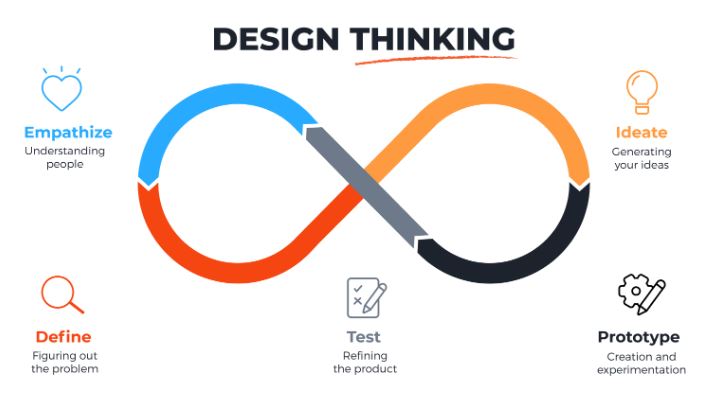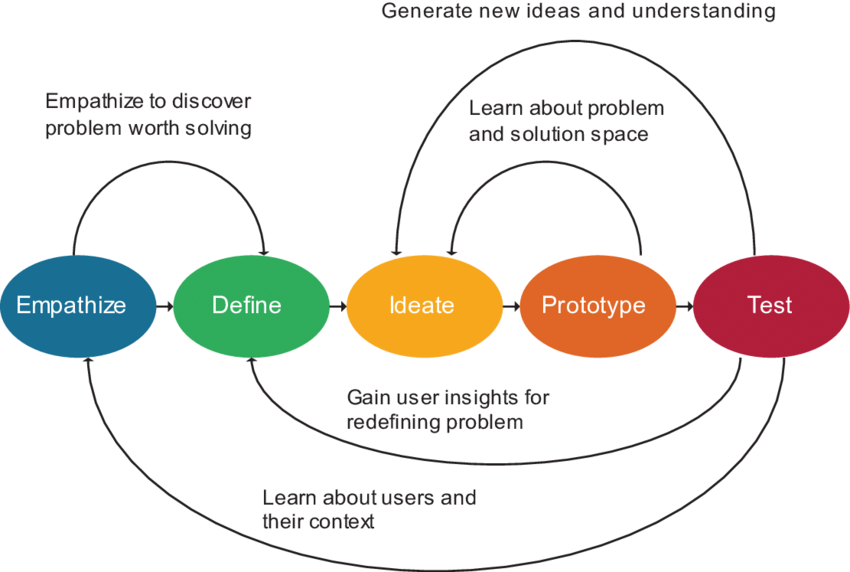
What is Design Thinking Model?
Last updated on 04th Nov 2022, Artciles, Blog
- In this article you will get
- 1.What is a Design Thinking?
- 2.What is Design Thinking model?
- 3.What is purpose of prototype?
- 4.The goal of Design Thinking Process
- 5.Conclusion
What is Design Thinking?
- Design Thinking is becoming increasingly famous approach for an organizations to solve problems.
- Design Thinking manages to solve issues in a creative way.

What is Design Thinking model?
The Design Thinking process is a widely used in the industries and was created by a Stanford d. school. The design thinking process can involves the concept of:
- Empathy
- Define
- Ideate
- Prototype
- Test
The five phases of a design thinking process are not always be sequential. This process does not follow the any specific order and can be applied once or can be a repeated iteratively.Now, it’s time to an examine how design thinking principles can assist us holistically in order to solve the challenges.
Empathy:
- Perform research and analyse to know a current DEI State.
- A good design idea comes through the continuous focus on a human-centric ideas.
- Design thinking not only can encourages us to gain DEI solutions but also removes barriers for professionals who are aiming to achieve their career aspirations with the fair and good opportunities.
- Design thinking begins with an empathy, and the aim in empathy stage is to focus on users.
- In this stage, it is an important to focus on a in-depth metrics like prediction and also prescriptive analysis.
- These metrics help to individual in cross-verifying the insights collected from an associates.
- The result of an empathy refuels a strategy, process a, and program with the innovative solutions.
Define:
- The understanding gain from an Empathize phase encourages us to a reframe the perceived problem and a gain perspectives, but the explain process helps us to allow more holistic look at path toward an expected solution.
- While defining a problem, should ensure that each associate follows problem-solving process correctly.
- The phase helps us to build with a most authentic solutions.
The explain stage encourages to:
- Analyze a observations.
- Identify a core problems.
- Focus on asking a right issues.
- Motivate users with the wise words.
Moving onto next phase, let’s discuss an ideate phase.
Ideate Phase:
- This is the experimental stage, and the aim of this stage is to solve problems by an identifying the best solutions.
- Designers aim to strategize solutions for a problem identified in a define phase.
- The designers isolate solution the streams and later merge and a refine insights.
In a simple terms, in the ideate phase of designers focus on:
- Sharing an ideas and.
- Prioritizing a ideas based on the requirements.
So far have discussed a three phases. In an Empathize phase, should address a divergent styles of thinking. In define stage, should consider convergent styles of a thinking to manage a overall process and purpose. Finally, in an ideate phase, should be able to uncover a more possibilities and the accept maximum ideation.
After an Ideate phase, let’s discuss what happens in a prototype phase:
Prototype Phase:
- Create prototype of a design solution that can finalized in the ideate phase.
- A prototype is the early sample of the model submitted to users for validation.
- Prototypes are the mid-to high-fidelity wireframes with more visual details and interactions between the elements of a design.
- The feedback is taken from users and it reworks a flaws in a prototype model in order to present stronger final product.
- In a simple terms, proposed solution is validated in this stage in the cost-effective way before launching fully fledged product.
What is purpose of prototype?
- Prototypes are the useful for user testing.
- They are ideal for a quick internal use and client feedback.
Testing:
- Testing is a crucial stage of design thinking process.
- Collect a valuable user feedback and get to know whether a prototype model has succeeded, or needs to be an improved.
- The insights collected during testing phase will push to iterate on a prototype model.
- This phase helps to gain a deeper understanding of a target users.
- Different designs are sent to the different users, and it tests a performance or usability for every version.
- It finalizes a design version that is found to be most desired and usable.
- In this phase, usability testing tools are used for an optimizing a user experience in websites.
The goal of Design Thinking Process
A lot of people must be a wondering what is goal of design thinking process. Well, it’s simple, the goal is to solve a complex problems from a human perspective.
The Design Thinking process focuses on a creativity, innovation, and user-centricity, helping to come up with an actionable solutions that are:
- Desirable for user.
- Viable for a business.
- A Technologically feasible.
That was all about a process of design thinking.The Design Thinking process serves as firm foundation to the formulate reliable strategies that result in a good products.

Conclusion
Design thinking is iterative, non-linear process which focuses on collaboration between the designers and users. It brings an innovative solutions to life based on how a real users think, feel and behave. This is human-centered design process consists of a five core stages Empathize, Define, Ideate, Prototype and Test.
Are you looking training with Right Jobs?
Contact Us- Hadoop Tutorial
- Hadoop Interview Questions and Answers
- How to Become a Hadoop Developer?
- Hadoop Architecture Tutorial
- What Are the Skills Needed to Learn Hadoop?
Related Articles
Popular Courses
- Hadoop Developer Training
11025 Learners - Apache Spark With Scala Training
12022 Learners - Apache Storm Training
11141 Learners
- What is Dimension Reduction? | Know the techniques
- Difference between Data Lake vs Data Warehouse: A Complete Guide For Beginners with Best Practices
- What is Dimension Reduction? | Know the techniques
- What does the Yield keyword do and How to use Yield in python ? [ OverView ]
- Agile Sprint Planning | Everything You Need to Know
